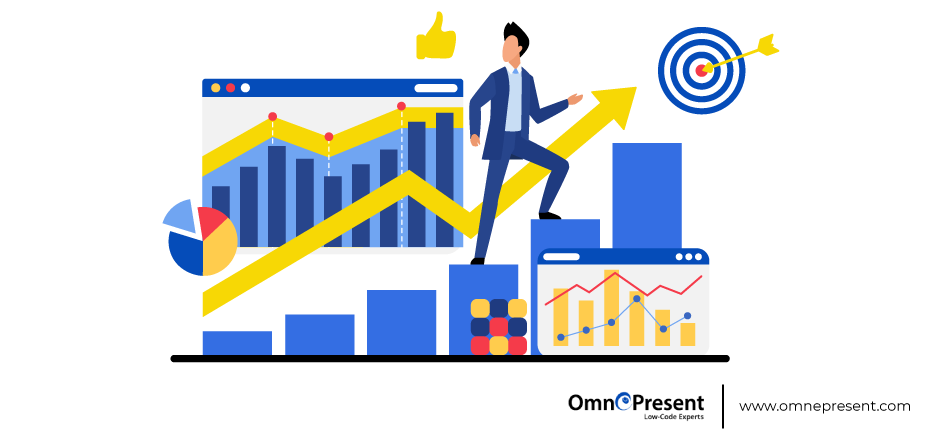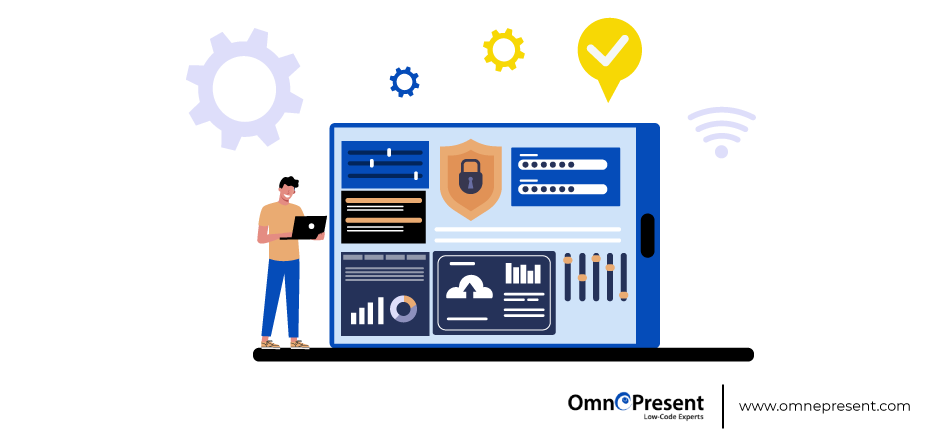
6 Advantages of Embedded Analytics
As per Market Research Future, it’s been predicted that embedded analytics in the coming future will grow by 14% per year to a $52 billion market by 2023.
So today we will be discussing what embedded analytics actually is and what’s the reason behind its evolution from the last few years.
Analytics, in general, refers to “ETL” i.e. it is a process in which we fetch data from the source, do all the transformations and ultimately create actionable business insights based on the data fetched. Traditionally, analytics capabilities exist in a standalone infrastructure because of which the user has to switch back and forth between his/her workflows while performing analysis. This was cumbersome and it degraded the value of analytics. This is where embedded analytics emerged.
So, what is embedded analytics? Embedded analytics is a technique of analyzing the data during a user’s natural workflow instead of toggling to other applications. It makes use of reporting and analytic capabilities which would help organizations to take better actions for their organization’s growth by just looking at those reports. It is a collaboration of analytics and workflow applications that prevents us from toggling between two separate systems, which indirectly saves time and gives us greater control over the process.
Following are 6 ways by which embedded analytics can improve your business.
1. Cultivate Data-Driven Decision Making

Embedded Analytics gives users timely and clear insights about how their business is progressing through the visuals available at the moment which promotes data-driven culture and encourages more analytical thinking. It helps to make timely, better, and faster decisions based on the information available or visible on the specific screen.
Through embedded analytics, people can understand the impact of their decisions which makes them confident in decision making. Thus, data-driven decisions are more successful compared to gut feeling decisions, although it’s not like that all the data-driven decisions are perfect. It is important that one understands and monitors the metrics continuously and then takes action.
2. Increase Revenue

When we incorporate embedded analytics in our business, it increases customer satisfaction and provides our customers the ability to make better, faster decisions based on data which increases our revenue.
Following are some of the ways that can help improve customer satisfaction and increase our revenue:
- Analytics can provide new problem-solving abilities to customers and demonstrate a commitment to improving the application.
- Incorporating Analytics capabilities will boost existing applications which can attract a lot of customer attention.
- Adding embedded analytics will give a variety of choices to different types of users.
3. Increase Productivity

Using embedded analytics means users can focus on other essential tasks instead of switching back and forth between various applications. They have easy and quick access to data instead of searching for data here and there which is quite hectic. As they have quick access to data, they can easily get business insights through the beautiful visualizations made from data available, which can help users to make decisions by just looking at the visualizations. Thus, increasing productivity.
4. Enhance Competitiveness

The biggest advantage that comes with embedded analytics is the competitive edge that it provides to both end-users and software providers in the following manner:
- Whenever users access an application that gives them access to dashboard creation or data, it gives them a modern app experience.
- Through trends that can be spotted on dashboards and reports, it gives a deeper understanding of how the market is behaving and what the customer needs. As a result, it helps to give a competitive edge over its competitors.
- Users spend more time in the app because with the help of embedded analytics it provides more data points to them without the need to bounce to different sources.
5. Increase ROI on Data Transformation Investment

To analyze data through useful insights in traditional BI applications requires extensive work. This extensive work is known as Extract Transform and Load (ETL). In the IT industry, the ETL process is always time-consuming and expensive. Hence, it is considered that the time, resources, and expense involved in ETL work should bear some return as well.
Thus, presenting business insights in such a way that the user doesn’t need to toggle between multiple applications using embedded analytics does increase the value of the data transformation effort. Hence, increased use and sticking with embedded analytics can help businesses to reduce the risk associated with long and tedious ETL work efforts.
6. Improve Customer Satisfaction

By incorporating embedded analytics as a part of business culture helps to increase sales, larger shopping carts, and happier customers. Embedded analytics helps to deal with large datasets and deliver required visuals to the customers by its user-friendly interface. As part of customer satisfaction, customers will be able to reach out to the market fast when they have the right analytics partner with them as the team of experts in embedded analytics will give a boost to the customers to launch fast in the market. Hence it’s a win-win situation for customers.
Microsoft Power BI is one such platform that removes the struggle from analysing data for answers. It saves businesses valuable time, budget, and resources. Its embedded analytics, smart tools, self-service capabilities, and in-built security helps you unlock valuable insights from data in automated visualizations and reports beyond contemporary norms. If you’d like to know more about how we can help you smoothly implement the platform for your business, book a session with us.
RECENT POSTS
CATEGORIES
